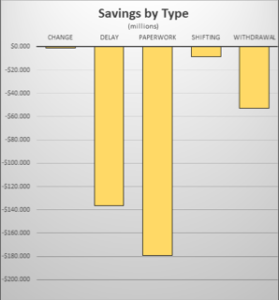The Daily Dish
December 4, 2017
Secret Sauce of the Regulatory Freeze
Eakinomics: Secret Sauce of the Regulatory Freeze
The Obama Administration finalized a costly regulation at the average rate of 1.1 per day and the self-reported (by the agencies) cost of complying with those regulations cumulated to $890 billion. That is an average stealth tax increase of over $110 billion a year. And people wonder why the recovery was about as V-shaped as an ocean boardwalk.
Enter the Trump Administration, which from the president’s inauguration to September 30 (the end of the federal government’s fiscal year) incurred essentially zero additional regulatory costs. Zero. Taken at face value it is quite stunning. But it does raise the question: how?
AAF’s Daniel Bosch provides a succinct and clear answer: less paperwork and delays in implementation. Specifically, he identified five categories of savings:
- Shifting of responsibilities (away from public sector to contractors)
- Delays (such as extending compliance deadlines)
- Paperwork (including information collection requests, applications, and reporting)
- Regulatory changes (modifications in how the regulation functions)
- Withdrawal of rules
He analyzed $378 million in burden cost reductions and found that almost half of those savings — $179 million or 47 percent — stemmed from paperwork reductions. Another 36 percent or $136 million can be attributed to delays. But only 0.29 percent are the result of actual regulatory changes. The chart below (reproduced from the original) makes the point vividly.
The Trump Administration’s taming of the regulatory state has been remarkable. But the real trick is actual regulatory rollback, and that is work yet to be done.
Fact of the Day
AAF research found that the Consumer Financial Protection Bureau has levied over $3 billion in regulatory costs during its 6-year existence.











